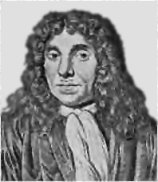|
怀孕
- 历史记载
|
|
1. 人类精子的发现
|
|

|
|
安东·范·列文虎克
A. van Leeuvenhoek
(1632 - 1723)
|
|
|
|
安东·范·列文虎克是荷兰商人,他后来成为一名透镜磨制专家和业余科学家。他用自己制作的显微镜观察了许多种液体、组织和矿物,并且在当时向科学权威人士通报了他的发现。1677年,他观察了自己的精液,成为第一个在一滴精液里看到人体精子的人。但是,他相信每一个精子细胞已经包含了人体“预成型的”状态,是一个潜在的完整人体。正象17和18世纪里在多种医学插图中所绘制那样,这个观点在许多年里得到了科学家们的普遍认可。
|
|
(左)列文虎克按照他看到的自己所绘制的精子细胞。(右)在列文虎克之后,其他人的绘图。在卵细胞发现之前,许多科学家相信精子细胞的头部含有一个全部的“预成型的”小人(矮人)。
|
|
(Left)
Leeuvenhoek’s
own
drawing
of
the
sperm
cells
he
saw.
(Right)
Drawings
made
by
others
after
Leeuvenhoek’s
discovery.
Before
the
discovery
of
the
egg
cell,
many
scientists
believed
that
the
head
of
each
sperm
cell
contained
a
fully
“preformed”
little
person
(homunculus).
|
|
|
Conception
- Historical Notes
1. Discovery of Human Sperm Cells
Antonius van
Leeuvenhoek was a Dutch
businessman who became an expert lens
grinder and amateur scientist. With a
self-built microscope, he investigated
various liquids, tissues, and minerals
and corresponded about his discoveries
with the scientific authorities of his
time. In 1677, examining his own
ejaculate, he was the first to see
living human sperm cells in a drop of
semen. He believed, however, that each
sperm cell already contained, in a
"preformed" state, the entire
potential human being. This belief was
shared by many scientists for many
years, as various medical illustrations
made in the 17th and 18th centuries
show.
|